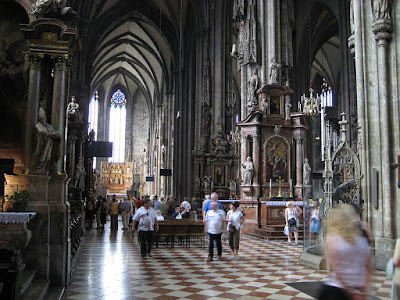You might read here for some more specifically on the feast: Old Catholic Encyclopedia: Feast of the Holy Name of Mary
The Virgin in Prayer by Giovanni Batitsta Salvi da Sassoferrato (+1685AD)
Before I move to recall the great historical event and battle that inspired the feast, you might enjoy this polyphonic setting of the Ave Maria by Tomas Luis Victoria:
The origin of having this commemoration of the Name of Mary on 12 September dates to the 17th century. The feast was instituted by Blessed Innocent XI in gratitude to Our Lady for the victory given to Christian arms at the Austrian city of Vienna, which, in 1683AD, was harried by the conquering forces of the Islamic Ottoman Empire.
Blessed Pope Innocent XI (reigned 1676-1689AD)
Blessed Pope Innocent XI (reigned 1676-1689AD)
Coming into the campaign against Vienna, the Ottoman Sultan, Mehmed IV, ruling a rejuvenated Empire and looked to crush the Christian world. His military commander and Grand Vizier, was Kara Mustafa. Aside from their own forces, the Ottomans could rely on Protestant Hungarian rebel allies. Standing in the way of their goals of conquest was the
In May 1683, a massive Ottoman army of 100,000+ sat in Belgrade when
By July, the Ottomans were at the border of the Empire and the Duke of Lorraine withdrew his forces rather than give battle at their first meeting in Hungary Lorraine Vienna Hainburg Lorraine St. Stephen’s Cathedral. The siege and bombardment began the next day after Von Starhemberg declined the request to accept Islam. (The Ottomans deployed 20,000 to the siege, and left 70,000 to protect their force against a relief attack) So it begins. Meanwhile, elsewhere, a rebel Hungarian army (with 25,000) attempted to reach Vienna to help the Turks, but the outmatched Charles of Lorraine (with 10,000) beat them at the Battle of Pressburg (Bratislava Lorraine called for help and reinforcements from the Emperor, Bavaria , Saxony, and Poland
St. Stephen's Cathedral exterior, Vienna, Austria. Watercolor by Jakob Alt, 1847.
St. Stephen's Cathedral exterior, Vienna, Austria. Watercolor by Jakob Alt, 1847.
Meanwhile, in Vienna Vienna
September started grimly – a section of wall collapsed from mining on 2 Sept, and on 4 Sept the Turks launched a major assault. The city held, however. A double mine attack on 8 Sept weakened another section of the wall – and the situation for the Austrian cause was becoming critical. Vienna Lorraine (now with 18,000 men), John George III of Saxony (9,000), Bavaria Vienna Vienna
Jan III Sobieski meeting Emperor Leopold I by Artur Grottger (+1867AD)
The war with the Turks would continue, but they never again threatened central Europe . On Christmas, 1683, Kara Mustafa was strangled with a silken cord for his failure.
St. Stephen's Cathedral interior, Vienna, Austria.
St. Stephen's Cathedral interior, Vienna, Austria.
["Stephansdom Wien 2" by Aconcagua - Own work. Licensed under CC BY-SA 3.0 via Commons]
Go ahead, take a listen to the bell Pummerin:
Recommended Source: Vienna 1683 by Simon Millar and Peter Dennis.
Live Well!






Fascinating! Thanks for this post!
ReplyDelete